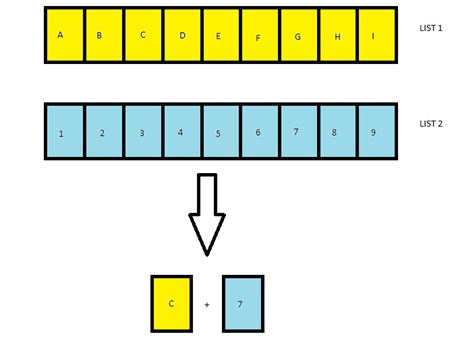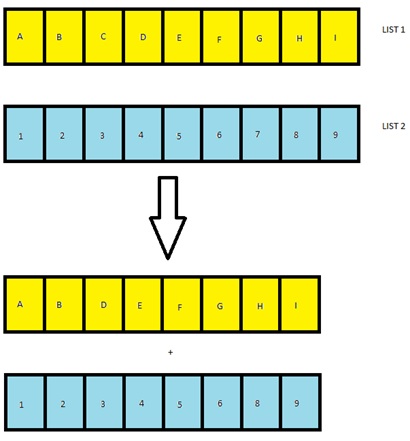30/06/2014
In patent specifications, it is common to include lists of features or parameters relevant to the disclosed invention. The lists may provide fall-back positions during prosecution of an application or during post-grant inter partes proceedings. However, a number of EPO Board of Appeal decisions have objected to selecting features from two or more lists, on the basis that it leads to added subject-matter. Such objections are increasingly common during examination of European patent applications, and particularly in respect of patent applications directed to chemical subject-matter where, for example, alternative chemical substituents of a compound, or alternative ingredients of a formulation, are often represented in multiple lists.
It is useful to remind ourselves of the potential pitfalls when considering an amendment before the EPO, where the amendment may find basis in multiple lists.
In T 12/81, the Board established that if two classes of starting substances are required to prepare the end products and examples of individual entities in each class are given in two lists of some length, then a substance resulting from the reaction of a specific pair from the two lists can nevertheless be regarded for patent purposes as a selection and hence new. T 12/81 is referred to in the EPO guidelines for examination (“the guidelines”) in relation to assessment of the novelty of a claim (G-VI, 8). The guidelines state that a selection from a single list of specifically disclosed elements does not confer novelty. However, if a selection from two or more lists of a certain length has to be made in order to arrive at a specific combination of features then the resulting combination of features, not specifically disclosed in the prior art, confers novelty (the “two-lists principle”).
The guidelines (H-V, 3.3) also refer to T 12/81 in the context of amendment, and indicate that deletions made from more than one list are normally not allowable.
When considering deletions/selections from multiple lists, EPO case law appears to distinguish between two different situations, one of which we refer to as ‘singling out’ (see figure 1), the other we refer to as ‘shrinking a generic group’ (see figure 2). Each of these situations is discussed in more detail below.
Singling Out

Fig 1. – Illustration of ‘singling out’
It is generally not permitted to select one member from multiple lists because such a selection is seen to result in an ‘individualisation’ that may not be directly and unambiguously derivable from the application as filed. Although an application may conceptually comprise such subject-matter, if it does not disclose it in that particular individualised form or contain a pointer to the particular selection, it is likely to be considered “new” subject-matter and hence not allowable.
This approach has been illustrated in a number of Board of Appeal decisions, where selecting from list was deemed impermissible:
In T 727/00, a claim was amended to specify one particular anionic surfactant from a list of 23 possible anionic surfactants, and one preferred molecular weight range of polyethylene glycol from a list of 6 possibilities.
T 942/98 concerned amendment of a generic chemical formula in a claim. Substituents X1, X2 and R5 were each restricted to a single substituent (oxygen, oxygen and hydrogen, respectively) from lists of possible substituents.
In T 059/94 The appellant had restricted the meaning of substituents R1, R2 and R3 as each being alkyl, from separate lists including a number of possible alternatives.
T 209/10 concerned a second medical use claim in which the patent proprietor selected a disease to be treated together with a dosage form, each from a list.
T 686/99 concerned a lubricant for refrigerating apparatus, involved a multiple selection from two lists. The patent proprietor selected a particular base oil (ester oils) from a list of three options (ester oils, alkylbenzene oils and mineral oils), and had selected a particular refrigerant (hydrofluorocarbon) from two alternatives (hydrofluorocarbon and hydrochlorofluorocarbon).
Is Singling Out Ever Allowable?
There have been some cases where an apparent singling out from two lists has been deemed allowable. However, these cases appear to be an exception rather than the rule. The reasoning in such cases is not entirely clear, and the cases have not established any general principles or rules for allowability.
In T 0783/09, the proprietor amended a claim by selecting one DPP-IV inhibitor from two listed possibilities and selected three antidiabetic compounds from a list of 22 possibilities. The Board permitted the amendment, concluding that that all combinations of the elements of the two lists were directly and unambiguously disclosed in a passage of the specification. The Board concluded that the skilled person would directly and unambiguously recognise 44 individual combinations, among them the three combinations in claim
1. The Board effectively treated the key passage as relating to a single list of 44 possibilities (each equally, very preferred embodiments).
In T 607/05, a claim in an application specified the limitations of at least 102 different probes and a density of about 103/cm2 different probes per square centimetre. The relevant passage of the description providing basis disclosed the following: “…numbers in excess of about 102, 103, 104, 105, 106, or even more and at densities of at least about 102/cm2, 103/cm2, 104/cm2, 105/cm2 and up to 106/cm2 or more…”The Board allowed the claim on the basis that they were not isolated single embodiments selected from a list of alternatives but they define limits of the array size. However, it is difficult not to see that there are two separate lists of 5 members each, without any specific pointer to the combination of the two chosen limitations.
Is The Size Of List Significant?
T 12/81 stated that “two classes of starting substances are required to prepare the end products and examples of individual entities in each class are given in two lists of some length, then a substance resulting from the reaction of a specific pair from the two lists can nevertheless be regarded for patent purposes as a selection and hence new.” But what is a list of “some length”?
T 689/99 (briefly summarised above) held that a single selection from a list of three options and a single selection from a list of two options contravened Art. 123(2), so we should be aware of the potential for an added subject-matter objection even when selecting from very small lists.
Shrinking Of Generic Groups

Fig. 2 – Illustration of shrinking of generic groups
In ‘shrinking of generic groups’, deletion of some members of multiple lists of sizeable length may be permitted if it does not result in singling out any hitherto not specifically mentioned individual compound or group of compounds, but maintains the remaining subject-matter as a generic group of compounds differing from the original group only by its smaller size. Such shrinking of the generic group of chemical compounds is not objectionable if these deletions do not lead to a particular combination of specific meanings of the respective residues which was not disclosed originally or, in other words, do not generate another invention. This principle was established in T 615/95, which concerned amendment of a generic chemical formula in a claim. The claim contained two lists resulting from deletion of one meaning from a list of six meanings (a reduction of about 17%) and a third list resulted from the deletion of one meaning from five meanings (a reduction of 20%).
T 1733/06 concerned a process for producing olefinic polymer. An amendment to a claim involved deletion of one meaning (“methycyclopentadienyl”) from a list of meanings of group “Cp” and deletions of two definitions (“halogen” and “Lewis base”) from a list of meanings of groups R1 to R4. The remaining lists in the claims contained 16 and 13 meanings respectively. The Board (referring to T 615/95) held that the few deletions of the definitions of Cp and R1 to R4 was far from creating a new invention by singling out a hitherto not specifically mentioned individual compound or group of compounds. The Board therefore allowed the amendment.
Is Shrinking Of Generic Groups Always Allowable?
Shrinking of generic groups may be objected to if it does not simply exclude certain embodiments but results in improvements or even additional effects, for which the original disclosure provides no basis; in other words, if there has a been a shift in the invention.
In T 948/02, the definitions of a number of the symbols used in the chemical formula of claim 1 had been restricted. The appellant argued that only a small part of the previously-claimed subject-matter had been given up in order to delimit claim 1 from the prior art not known to the appellant. The Board disagreed. Focussing on whether deletions lead to a particular combination of specific meanings of the respective residues which was not disclosed originally, or in other words, did not generate another invention, the Board explained that if a limitation of a claim does not simply exclude certain embodiments but results in improvements or even additional effects, for which the original disclosure provides no basis, then such an amendment will not be allowable under Article 123(2) EPC. The Board held that a shift of the core of the invention had taken place in order to exclude the disclosure of a prior art document.
Is The Size Of The List Significant?
During examination, it is not uncommon for the EPO to raise objections focussing on the percentage by which lists have been reduced when making an amendment, but the case law does not provide clear guidance as to what proportion a list has to be deleted in order for it to constitute a ‘singling out’ rather than a mere ‘shrinking’. In T 615/95 (above) shrinking of lists by about 17% and 20% was found to be acceptable.
T 615/95 held that deletion of some members of lists of sizeable length may be permitted. What constitutes a sizeable length? As the EPO are tending to focus on the proportion by which lists have been reduced in size, it appears that deleting one member from a list of 10 is more likely to be acceptable than deleting one member from a list of 3.
Conclusions
When making amendments to claims, selecting features from multiple lists carries the risk of an added subject-matter objection being raised. Although there is a general rule that such selections are normally not allowable, it is apparent that they may be allowable in particular circumstances. However, these particular circumstances are rather complicated and not entirely clear.
If you are considering claim amendments that may include selections from multiple lists, we recommend that you seek our advice.
If this article raises any questions or concerns that you would like to discuss, please contact us.
This article is for general information only. Its content is not a statement of the law on any subject and does not constitute advice. Please contact Reddie & Grose LLP for advice before taking any action in reliance on it.


